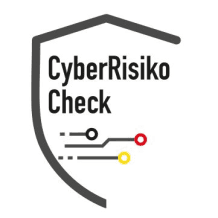Security Posture Management (SPM) is an integral part of modern corporate security strategies. It is a methodical approach to assessing, monitoring, and optimizing the security posture of a company. In this comprehensive guide, you will learn how SPM helps organizations identify potential vulnerabilities, minimize risks, and ensure overall compliance.
Why is Security Posture Management so essential? Given the constantly growing threats from cyberattacks and data breaches, it is crucial for companies to regularly review and improve their security measures. Through a proactive management process, companies can not only respond to current threats but also tackle future risks with a strategic approach. In addition to maintaining IT integrity, SPM also significantly contributes to strengthening the trust of customers and partners.
The following article answers central W-questions about the topic of Security Posture Management and provides deeper insights into its functioning, implementation, and advantages:
WHAT is Security Posture Management? Security Posture Management describes the continuous process of assessing and managing the security posture of a company. It includes determining the current security status, analyzing vulnerabilities, monitoring systems, and implementing improvement measures. This also involves the regular monitoring of IT systems, networks, and applications, as well as assessing compliance requirements. Technically, SPM integrates tools and processes that help implement security policies, detect threats early, and implement corresponding countermeasures.
WHY is Security Posture Management important? Today’s digital work environments are continuously changing. With the increase in hybrid working models, cloud services, and mobile devices, the attack surface for cybercriminals also increases. SPM helps companies gain a detailed picture of their security posture and thus respond specifically to vulnerabilities. It creates transparency and enables prioritization, allowing resources to be optimally deployed to protect sensitive information. Moreover, an effective SPM strategy can help ensure compliance with legal requirements and industry-specific standards, which is particularly important in regulated industries.
HOW does the implementation of Security Posture Management work in practice? Implementing a successful SPM strategy requires a structured approach that can be divided into several phases:
Inventory and Risk Analysis: First, a detailed analysis of the existing IT infrastructure is conducted. All systems, applications, and networks are documented and evaluated for their security risks. This phase includes the identification of vulnerabilities that are viewed from both a technical and an organizational perspective.
Definition of Security Policies: Based on the insights gained, specific security policies and standards are defined, which form the framework for all future measures. These policies include guidelines on access rights, data encryption, network security, and often also emergency response plans.
Implementation of Technical Solutions: With clear guidelines in place, technical measures are now implemented. This can involve the introduction of security software, firewalls, intrusion detection systems (IDS), and other specific tools. Modern SPM systems often also utilize AI-based analyses to detect anomalies in real-time.
Continuous Monitoring and Reporting: A central component of SPM is the continuous monitoring of IT systems. Through regular monitoring, companies can early identify deviations from normal operations and take appropriate actions. In addition, regular reports provide valuable insights into the effectiveness of the measures taken and help continuously improve the security strategy.
Adjustment and Optimization: As threats constantly evolve, Security Posture Management must also be flexible. Regular reviews, audits, and adjustments of the security strategy are therefore essential. Companies should be able to dynamically adapt their security measures to new challenges to remain optimally protected at all times.
WHAT advantages does effective Security Posture Management offer? A well-implemented SPM provides numerous benefits. The first and most obvious point is the improved detection and mitigation of cyber threats. Through continuous monitoring, the system can identify potential attacks early, even before they can cause significant damage. The ongoing assessment of the security posture helps remediate vulnerabilities promptly, thereby reducing the attack surface.
Furthermore, a proactive SPM strengthens the compliance of the company. Many industries are subject to strict legal requirements and data protection regulations. By employing SPM, companies can more easily demonstrate that they have taken all necessary security measures – which is particularly beneficial during audits and regulatory inspections.
Moreover, a continuous security management process strengthens the trust of customers and business partners. In times when data breaches and cyberattacks frequently make headlines, a transparent and well-documented security strategy can serve as a competitive advantage. This not only contributes to enhancing reputation but also prevents potential damage to the image.
WHEN should a company begin Security Posture Management? There is no too early a timeframe to engage with SPM. Even companies in the startup phase can benefit immensely from a proactive security approach. The sooner security measures are implemented, the better equipped the company will be against future threats. Even established companies that have so far relied on reactive security approaches should consider transitioning to a proactive management process. Early implementation can not only prevent financial damage but also minimize downtime and ensure smooth business operations.
WHAT challenges commonly arise when implementing Security Posture Management? Despite the numerous advantages, there are also challenges in implementing an SPM. One of the biggest hurdles is integrating SPM into existing IT landscapes. In many companies, different systems and technologies are in use, making uniform monitoring and management difficult. Additionally, the rapid evolution of the threat landscape can lead to the technologies in use quickly becoming outdated. Therefore, it is essential to choose solutions that are flexible and scalable.
Another aspect is the required personnel effort. Continuous monitoring and analysis of the security posture require qualified personnel. Often, there is a lack of specialized professionals internally, forcing companies to rely on external service providers or Managed Security Services. These can be a sensible addition to ensure continuous operations.
Moreover, the topic of costs often represents a significant concern. The initial costs for implementing an SPM system can be substantial – alongside software licenses and hardware investments, there are also costs for training and hiring specialized staff. However, the long-term advantages outweigh the costs, as proactive risk mitigation can prevent potentially higher consequential damages.
How can the integration of Security Posture Management into the existing corporate structure succeed? A successful transition to comprehensive security management begins with a detailed analysis of existing processes and IT structures. It is advisable to first conduct an inventory and evaluate existing security policies. In many cases, it makes sense to proceed stepwise and prioritize critical areas initially. Through pilot projects and proof-of-concept implementations, companies can gain initial experiences and adapt the solution to their specific needs.
Another critical factor is the involvement of all relevant stakeholders. IT departments, compliance teams, and executive management should be engaged in planning and implementation to develop a holistic and practical solution. Regular training and awareness campaigns can help ensure that all employees are informed about the proper handling of security risks. Only through a collective effort can effective and sustainable Security Posture Management succeed.
What technological trends are currently influencing Security Posture Management? Technological development is advancing rapidly and has direct effects on SPM. Artificial intelligence (AI) and machine learning play an increasingly important role in the identification and analysis of threats. By utilizing these technologies, systems can recognize patterns and anomalies in real-time, enabling faster identification of potential security risks.




